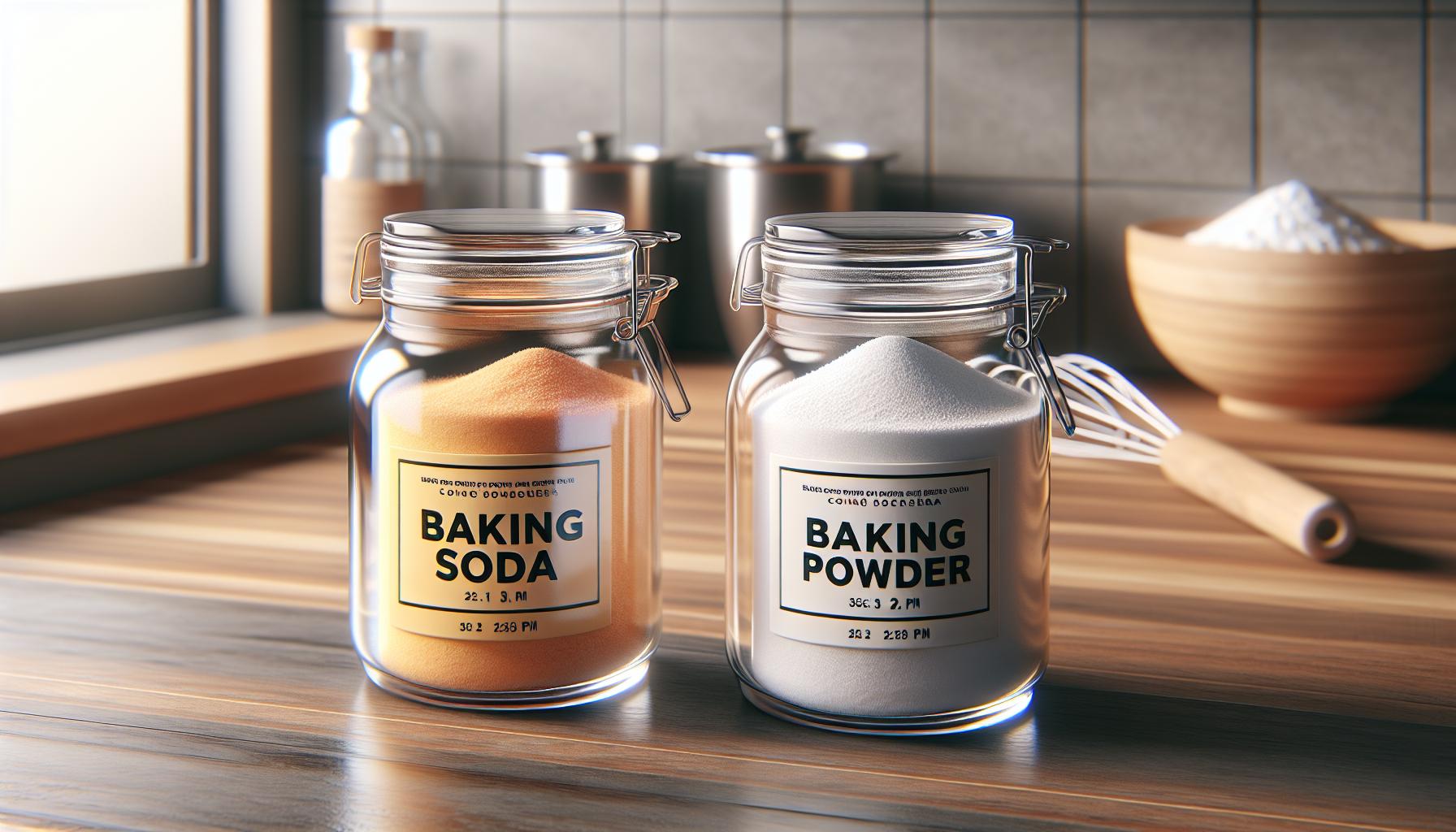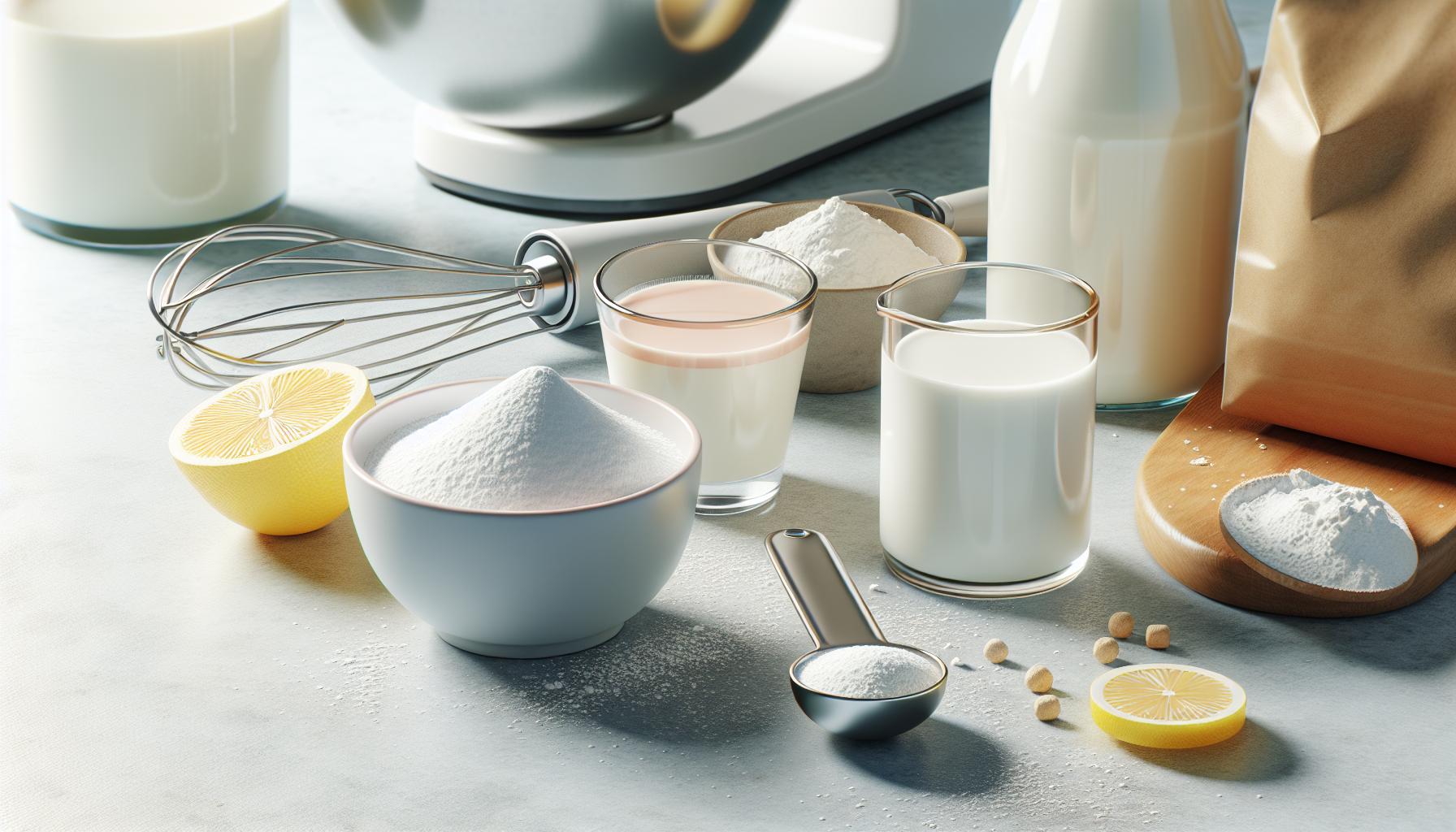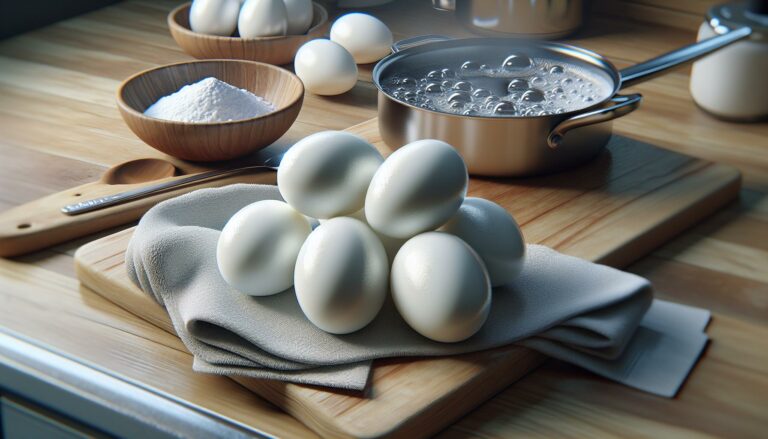Ever found yourself knee-deep in a baking project only to discover you’re out of baking powder? Before you dash to the store in your flour-covered apron, there’s a kitchen chemistry hack that might save your day. While baking soda and baking powder might sound similar, they’re not exactly twins in the leavening family.
Many home bakers face this common dilemma, and the good news is that baking soda can indeed pinch-hit for baking powder – with a few clever adjustments. It’s like sending in your backup quarterback; you’ll need a different game plan, but you can still score that perfect rise in your baked goods.
Baking Soda and Baking Powder
Baking soda and baking powder are essential leavening agents that create rise in baked goods. These ingredients rely on chemical reactions to produce carbon dioxide gas bubbles.
Chemical Composition
Baking soda consists of pure sodium bicarbonate (NaHCO3), a single alkaline compound that activates when combined with acidic ingredients. Common acidic ingredients include buttermilk, yogurt, sour cream, citrus juice, cocoa powder, honey, molasses or vinegar.
Baking powder combines sodium bicarbonate with cream of tartar (a dry acid) and cornstarch. Double-acting baking powder contains two types of acids – one that reacts immediately with liquid and another that activates with heat during baking.
How Each Leavening Agent Works
Baking soda creates carbon dioxide bubbles when it contacts both moisture and acid ingredients. The reaction happens immediately, requiring quick baking after mixing to capture the gases. A recipe needs 1/4 teaspoon of baking soda for each cup of acidic liquid.
Double-acting baking powder produces gases in two stages. The first reaction occurs when liquids mix with the batter. The second reaction begins when heat enters the mixture during baking. A recipe typically calls for 1-2 teaspoons of baking powder per cup of flour.
| Leavening Agent | Required Acid | Activation Time | Amount per Cup |
|---|---|---|---|
| Baking Soda | External acid needed | Immediate | 1/4 tsp per cup acid |
| Baking Powder | Built-in acid | Two-stage | 1-2 tsp per cup flour |
The Key Differences Between Baking Soda and Powder
Baking soda and baking powder play distinct roles in baking despite their similar names. These leavening agents operate through different chemical processes and produce varying results in baked goods.
Activation Process
Baking soda activates instantly when combined with acidic ingredients and moisture, creating carbon dioxide bubbles that cause immediate leavening. This single-action process means the dough or batter requires quick baking to capture the gases. In contrast, baking powder initiates a two-stage reaction: the first occurs when mixed with liquid ingredients at room temperature, and the second activates during baking at higher temperatures.
| Leavening Agent | Initial Activation | Secondary Activation |
|---|---|---|
| Baking Soda | Immediate with acid | None |
| Baking Powder | Room temperature | 170°F (77°C) |
Taste and Flavor Impact
Baking soda creates a distinct metallic taste in baked goods when used in excess or without sufficient acid to neutralize it completely. The resulting flavor presents as slightly soapy with a bitter aftertaste. Baking powder produces a neutral taste profile due to its balanced combination of acid and base components. This neutrality makes baking powder more forgiving in recipes where precise measurements vary slightly.
| Leavening Agent | Flavor Profile | pH Impact |
|---|---|---|
| Baking Soda | Metallic/Bitter | Alkaline |
| Baking Powder | Neutral | Balanced |
Substituting Baking Soda for Baking Powder
Converting baking powder measurements to baking soda requires precise calculations and additional acidic ingredients for successful leavening.
The Proper Ratio
Replacing baking powder with baking soda demands a 1:3 ratio conversion. One teaspoon of baking powder equals 1/4 teaspoon of baking soda plus 1/2 teaspoon of cream of tartar. This substitution works in recipes calling for up to 2 teaspoons of baking powder. Larger quantities affect taste quality due to increased sodium content.
| Original Amount (Baking Powder) | Baking Soda | Cream of Tartar |
|---|---|---|
| 1 tsp | 1/4 tsp | 1/2 tsp |
| 2 tsp | 1/2 tsp | 1 tsp |
- Buttermilk replaces 1/2 cup of regular milk per 1/4 teaspoon baking soda
- Lemon juice adds 1/2 teaspoon per 1/4 teaspoon baking soda
- Yogurt substitutes 1/2 cup of liquid per 1/4 teaspoon baking soda
- Vinegar incorporates 1/2 teaspoon per 1/4 teaspoon baking soda
- Cream of tartar uses 1/2 teaspoon per 1/4 teaspoon baking soda
Common Recipes Where Substitution Works
Specific baked goods accommodate the substitution of baking powder with baking soda due to their natural acid content ingredients. These recipes maintain their texture quality when using the correct ratio of baking soda plus an acid component.
Quick Breads and Muffins
Quick breads recipes adapt well to baking soda substitution due to their common acidic ingredients like buttermilk sour cream yogurt. Banana bread works particularly well with baking soda substitution since bananas provide natural acidity. A standard quick bread recipe calling for 2 teaspoons of baking powder converts to 1/2 teaspoon baking soda plus 1 teaspoon cream of tartar. Popular quick bread variations include:
- Zucchini bread using 1/4 teaspoon baking soda with 1/2 cup yogurt
- Pumpkin bread combining 1/4 teaspoon baking soda with 1/2 cup buttermilk
- Cranberry muffins mixing 1/4 teaspoon baking soda with 1/3 cup sour cream
- Buttermilk pancakes using 1/4 teaspoon baking soda per cup of buttermilk
- Yogurt waffles combining 1/4 teaspoon baking soda with 3/4 cup plain yogurt
- Sourdough pancakes mixing 1/4 teaspoon baking soda with 1 cup sourdough starter
When to Avoid the Substitution
Baking soda substitutions for baking powder require careful consideration as they don’t work effectively in all recipes. Understanding these limitations helps prevent baking mishaps.
Delicate Baked Goods
Angel food cakes, chiffon cakes, sponge cakes, meringues, macarons, delicate cookies require precise leavening control. These light textured desserts depend on the double-acting properties of baking powder for proper rise timing. The substitution alters the delicate protein structure in egg-based batters, leading to dense or collapsed results. The immediate reaction of baking soda disrupts the formation of essential air bubbles that create the signature airy texture of these baked goods.
Recipes with No Acidic Elements
Plain butter cookies, shortbread, basic white cakes, vanilla cupcakes, sugar cookies lack natural acidic ingredients for proper activation. Baking soda remains inert without an acid present, resulting in flat dense baked goods with a soapy aftertaste. The absence of acidic elements like buttermilk, yogurt, vinegar, citrus juice or cream of tartar prevents the chemical reaction needed for proper leavening. Adding acidic ingredients alters the original recipe’s intended flavor profile texture balance.
Baking Soda and Baking Powder
Understanding the science behind baking soda and baking powder empowers home bakers to make successful substitutions in their recipes. While baking soda can replace baking powder in many recipes it’s crucial to remember the need for acidic ingredients and proper ratios.
The key to success lies in identifying recipes that naturally contain acidic components and following the 1:3 substitution ratio. Quick breads muffins and certain breakfast items are particularly well-suited for this swap. Yet some delicate baked goods will always require baking powder’s unique properties.
Armed with this knowledge bakers can confidently adapt their recipes when needed knowing exactly how to achieve the perfect rise in their baked creations.




